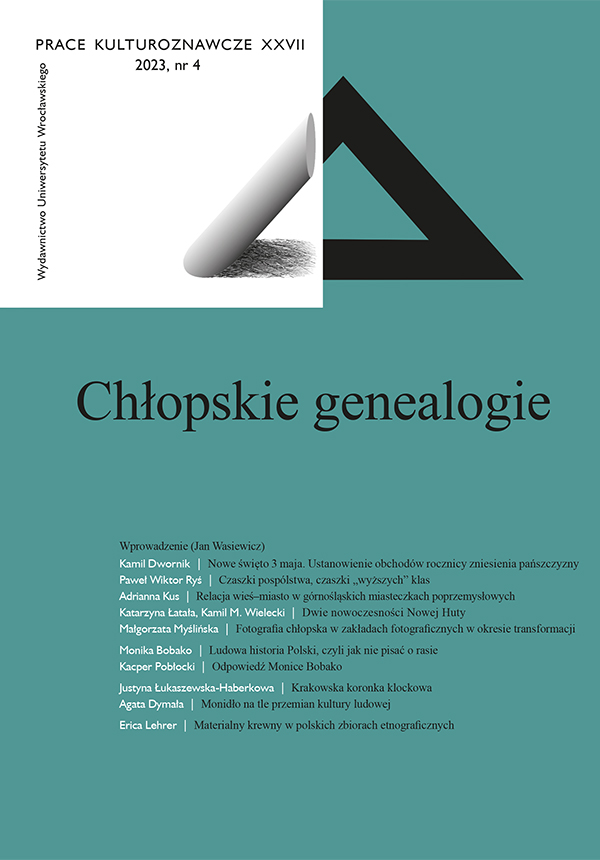Fotografia chłopska w zakładach fotograficznych w okresie transformacji. Na podstawie książki Dworki i pałace oraz czasopisma branżowego„Twoje Studio”
Peasant photography in photo parlours during the transformation period: Based on the book Dworki i pałace
and the trade magazine Twoje Studio
Author(s): Małgorzata MyślińskaSubject(s): Photography, Rural and urban sociology, Sociology of Art, History of Art
Published by: Wydawnictwo Uniwersytetu Wrocławskiego
Keywords: peasant photography; photo parlour; imaginarium; middle class; radical program of visual sociology;
Summary/Abstract: Within the artist residency in Zamek Culture Centre in Poznań, and my artistic research The Photo Parlour (2018), I made an inventory of equipment and paraphernalia of photo parlours in the Greater Poland region, mainly backdrops made by painters-craftspeople and props. The collected material let me build a photographic archive, on which my photography book Dworki i Pałace [Manors and Palaces]—prepared in tandem with the self-publishing collective Ostrøv—is based.The article is devoted to the visual culture of photo parlours and the identity they have built, a common imaginarium of a phantom middle class—rooted in its peasant ancestry, but nonetheless aspiring to live a “better life.” This process of coallescing into a new social group was spurred by visual norms prevalent during the transformation period—with imitation chief among them. In the field, I have investigated the role of playing dress-up, playing so called “scenes sessions,” inspired by cultural norms of the aristocracy and the gentry. The images created with backdrops, props, choreographies and gestures legitimized new social positions, which were then applied by social climbers during their ascent.Using theoretical tools of a “radical program of visual sociology” and the category of looking “behind the image” I argue that the visual culture of photo parlours can be classified as peasant photography. One of the features of peasant photography is its inability to deny someone’s exist- ence. Peasant photograph, one of the major characteristics of which was commemoration, served as a means of a collective “unremembering,” or intentional forgetting—of one’s peasant origins.
Journal: Prace Kulturoznawcze
- Issue Year: 27/2023
- Issue No: 4
- Page Range: 87-105
- Page Count: 19
- Language: Polish

